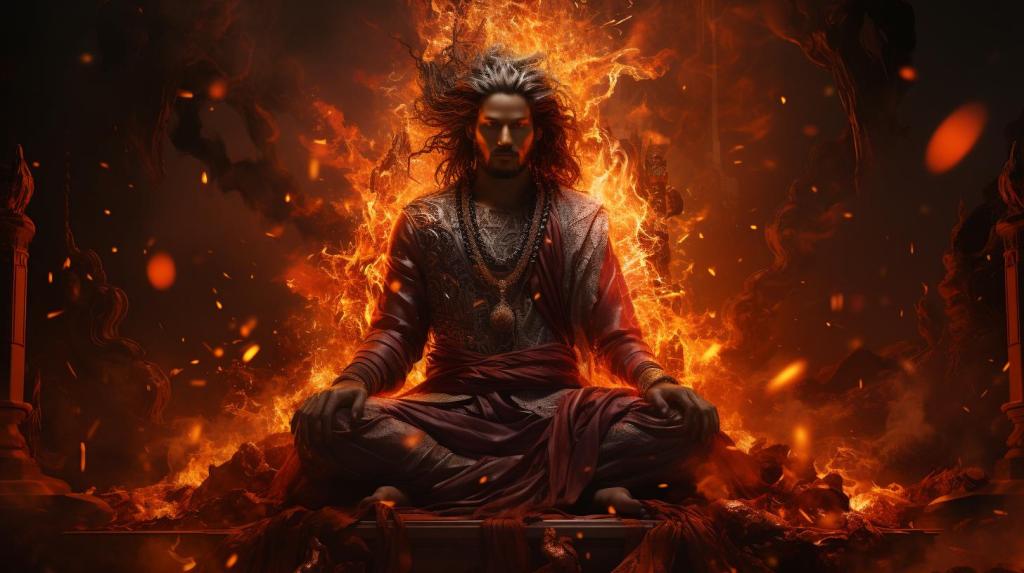Here, unlike in mainstream Hinduism, women play a role…
June 23, 2024

Huge crowds jostle for a glimpse as fires send sparks high into the night sky. There are two specially built enclosures with altars, covered by rattan roofs. The biggest contains a large brick altar constructed in the shape of a bird with spread wings. Among a dozen officiating priests – young and old, fathers and sons – the chief priest sits on a black antelope skin, his head covered. He and his wife (here, unlike in mainstream Hinduism, women play a role), along with the other priests, may not leave the enclosure for the duration of the ritual. There are blood sacrifices, milk offerings to the Asvins (the divine boy twins who ride the winds), and a sacred drink called soma is consumed, which is pressed from a mountain plant. For thousands of years these Brahminical rituals have been zealously guarded and never shared with the outside world; and this is especially true of the mantras. These magical formulas can take days to recite, only Brahmins can utter them, and they have been passed down orally from father to son, with exact accuracy, over a vast period of time.
Mantras still exist in many societies. They have spread in historical times from India to China, Tibet, the Far East and Indonesia. They are a part of the archaic past of mankind, but no culture has assigned more importance to them than that of India. They work on the emotions, the physiology and the nervous system; along with yoga, they are a way of achieving a heightened mental and physical state. Representations of figures on seals from the Bronze Age show men sitting in a yogic posture: it is probably one of the oldest obsessions of Indian culture.
Westerners were first able to get close to these practices and record them at a performance in 1975. But when they sat down to analyse them, to unpick their mystery, scholars were perplexed. During parts of the ritual there was no communication through ordinary language. The patterns of sounds that were recited – patterns that took years to learn and days to recite – clearly followed elaborate rules, but they had no meaning. In fact, meaning was something on which the Brahmins could offer no light. This was ‘what was handed down’. The doing was all. What could be the purpose? How had they developed?
Two important ideas from other forms of human creativity can perhaps help us to approach this problem. The first is music: another way of organizing sounds into an experience to create emotion. For music also has no meaning in itself; in other words, it is not capable of expressing anything. The second is ritual, which also need have no meaning. Hence, meaning need not have been important in the early roots of religion. It was only later in human history, through sacred texts and stories, that humans tried to give a rational explanation, a system, for their most archaic practices.
When experts analysed recordings of the mantras they were mystified. The patterns had no analogue in human culture. Not even music in the end was helpful, although mantras do have refrains, cycles and triplets. The breakthrough was only made possible by the development of computer technology. Patterns of mantras from the twelve-day Agni ritual recorded in 1975 were put on to a computer, and computer analysis showed that the nearest analogue of these sound sequences was birdsong. An astonishing conclusion might follow: the possibility that the performance of such patterns of sounds is older than human language, a remnant of a pre-linguistic stage when sound was used in a purely syntactical or ritual manner. Homo sapiens, it is now suspected, developed speech only in the last 50,000 years, since the migration from Africa, and perhaps much more recently. But we know from the animal kingdom that there was ritual before there was speech – when sound and gesture are combined in ‘ritual’ behaviour. If so, the combination of ritual with pre-speech sounds perhaps takes us to the dawn of humanity, the beginning of ritual and religion and science.
Michael Wood – The Story of India